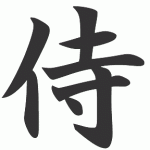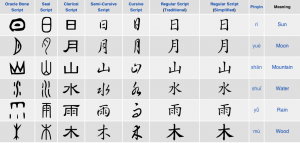Kanji: the origins of pictograms
 Kanji are the Japanese forms of the traditional Chinese characters that were first used as far back as 8,000 years ago. Many countries in Asia use some form of traditional Chinese pictograms: variants are present in the written languages of Korea, Vietnam and Taiwan, as well as mainland China and Japan.
Kanji are the Japanese forms of the traditional Chinese characters that were first used as far back as 8,000 years ago. Many countries in Asia use some form of traditional Chinese pictograms: variants are present in the written languages of Korea, Vietnam and Taiwan, as well as mainland China and Japan.
Frustratingly hard to learn for westerners, a competent Kanji reader can identify at least 2,000 different characters, though there are apparently around 50,000 different characters in all. However, most of those are archaic, technical or very rarely used.
Some of the most basic forms of Kanji are straight pictograms – characters that are used to express literal things. The kanji for “tree” (木) looks a little like a tree, but many Kanji that are expressing even simple ideas seem pretty far removed from their real-life meanings. The main reason for this is that the script has changed somewhat in the last 8,000 years. Here’s a table from Wikipedia, showing how some simple characters have evolved over time from forms that closer resemble their meanings. Click it for the full size version.
For learners of Kanji or any other Chinese-inspired characters, there are great sites like memrise.com, which have interactive flashcards and quizzes that can really speed up your learning. Memrise in particular brings a small gaming element into your character learning, by introducing characters to you as ‘seeds’, and having you ‘water’ them into becoming fully-fledged ‘plants’ by repeatedly recognizing, translating and transliterating them correctly. However, with so many characters, it’s truly a long-term goal – which just goes to show how learning Japanese can be a truly challenging task, especially if you want to get a real grip on Kanji.

